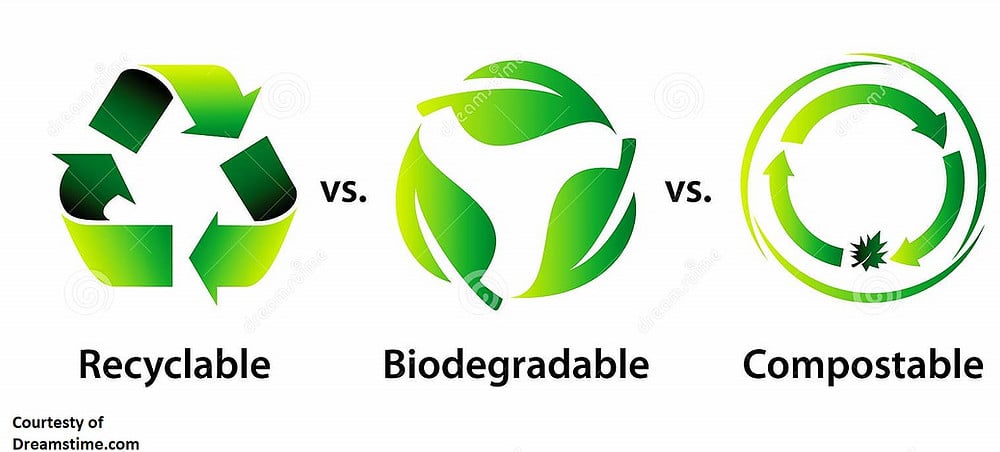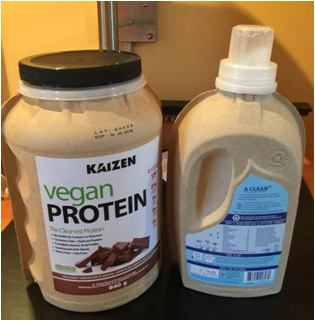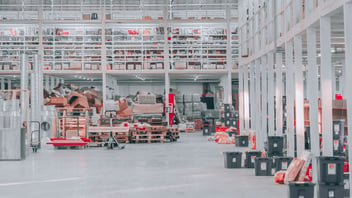The Big 3 Eco-Friendly Terms
We’ve heard so much banter back and forth about consumers and suppliers wanting eco-friendly packaging for their products. However, many do not know the difference between these 3 main eco-friendly terms.

Plastic recycling is the process of recovering scrap or waste plastic and reprocessing the material into useful products. Each time plastic is recycled, additional virgin materials must be added to help improve the integrity of the material. So, even recycled plastic has new plastic material added in.
Advantages:
· Reducing the amount of plastic used for packaging is one of the easiest and fastest ways to implement an eco-friendly strategy.
· Doesn’t require massive buy-in or change from a corporate level, easier for people to understand.
Disadvantages:
· Not enough information or a solid process for people, communities, or companies to follow. For example, knowledge of which plastics could be recycled and which shouldn’t be.
· No unified recycling program in the U.S. Instead, individual communities carry out their own recycling programs, and while some communities do a great job, others do not.
· Nothing that has been proven (other than a completely closed-loop system to recycle certain types of plastic, like thin grocery store bags) to be effective in taking bulk recycled plastic (non-grocery store) and using it again other than making it regrind (to be used in park benches, plastic lumber, children’s toys, etc.). It’s still worthwhile but it hasn’t helped reduce the amount of bulk recycled plastic.
Biodegradable plastic is plastic that decomposes naturally in the environment. This is achieved when microorganisms in the environment metabolize and break down the structure of biodegradable plastic. The end result is one which is less harmful to the environment than traditional plastics.
Here are some things to remember and to be aware of regarding biodegradable plastics:
1. Ask the manufacturer for third-party certificate document proving the quality of the product
a. NOT from the company itself, only an accredited third-party lab
b. NOTE: Some companies try to fool consumers by providing certificates for certain parts or ingredients of their packaging, not the package as a whole
c. NOTE: Read the fine print. Some companies make biodegradable claims by citing that only in certain conditions will biodegradation occur and could take up to 5 years. 5 years! 5 is better than a thousand but you get the point.
The Federal Trade Commission (FTC) states that in order to call an item biodegradable, an item must break down in a reasonable period of time after regular disposal. The American Chemistry Counsel did a study and determined that most consumers feel this biodegradation period is within 1 year.
Advantages:
· Great concept, will work if there is a dedicated area to expose this packaging to air and sunlight in order to “break down.”
Disadvantages
· Trash “smells,” and because most people aren’t aware of what to do with packaging in general (biodegradable or otherwise), they throw it away with other trash. Trash goes to a landfill and is buried deep into the ground to eliminate the smell. By burying biodegradable packaging, it isn’t exposed to air or sunlight, so it doesn’t break down.
· Not many styles of packaging that are “consumer friendly…attractive…cost effective.”
· Barrier properties are not able to protect the contents while being printed for high-end graphics.
· Expensive compared to traditional packaging and/or recycled plastic
Compostable plastic must also disintegrate and become indistinguishable in the compost and CANNOT leave any toxic material behind. That means compostable plastic breaks down to a point that it can help in the support of plant growth
Compostable
1. Must meet ASTM D6400 or ASTM D6868
a. NOTE: Insist on third-party certification (someone other than your manufacturer).
b. NOTE: Consider using www.findacomposter.com to find a professionally managed facility, which controls the heat and moisture so composting not only happens but it happens quickly. Home composting takes a very long time.
Advantages:
· Definitely something people and companies want
Disadvantages
· Not many styles of packaging that are “consumer friendly, attractive, or cost effective.”
· Expensive
· Barrier materials (to keep the contents fresh) are not able to be printed with the bold/photographic quality consumers are looking for or retailers want.
Misc. Question
Will compostable products biodegrade in a landfill?
Not unless these products are exposed to air and sunlight, which goes against what landfills actually do. They bury trash so no air or sunlight can penetrate and cause biodegradation.
Key takeaway…landfills are NOT designed for anything to break down and biodegrade, they are designed to preserve forever.
We hope you’ve found this article to be informative and provide some insight into these 3 terms that are thrown around so often. There are solutions to help our environment, but we need an effort by all (government and individuals) to provide options.



.png?width=352&name=pasted%20image%200%20(1).png)
